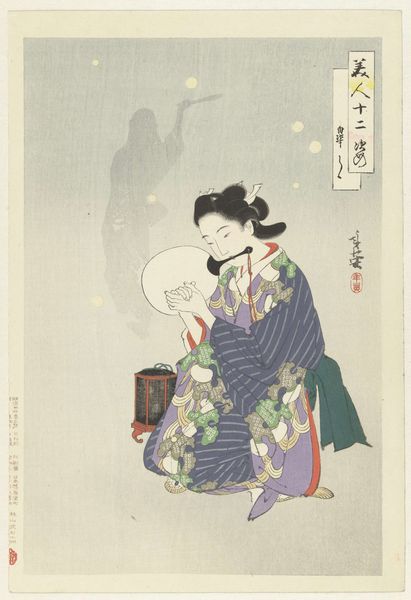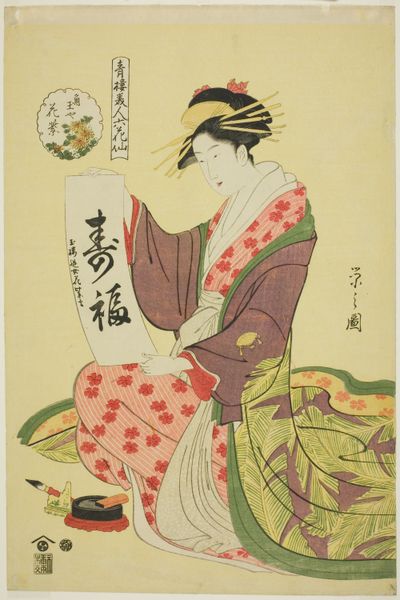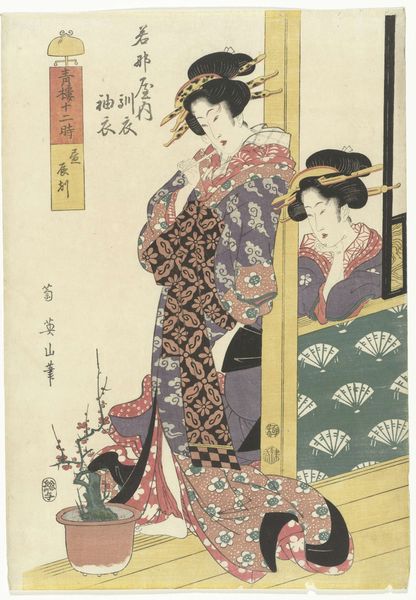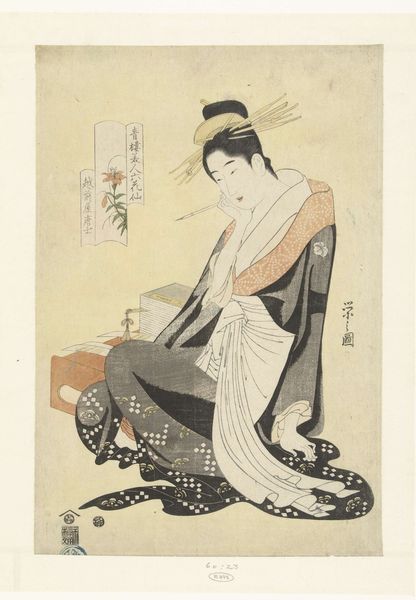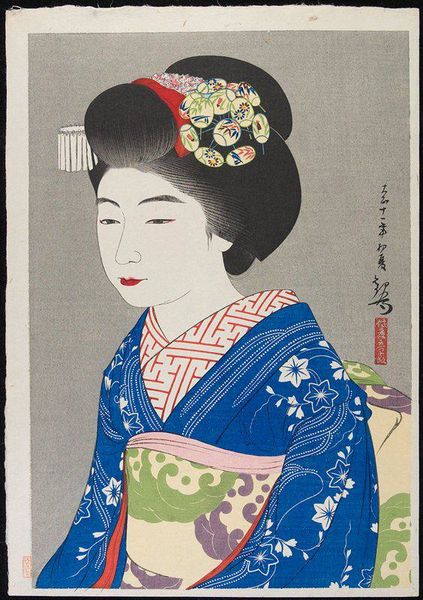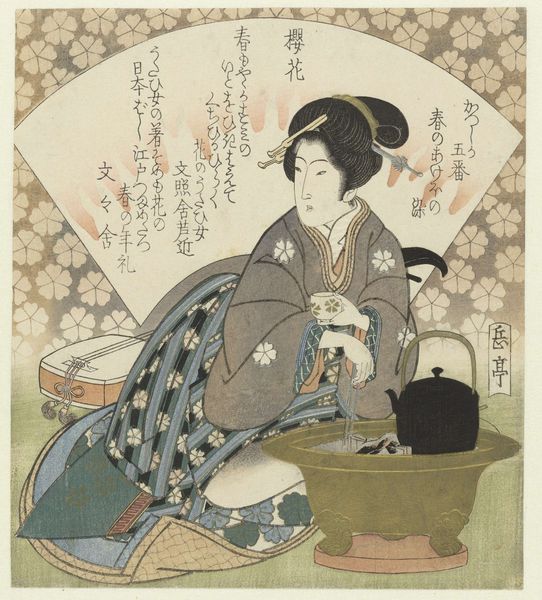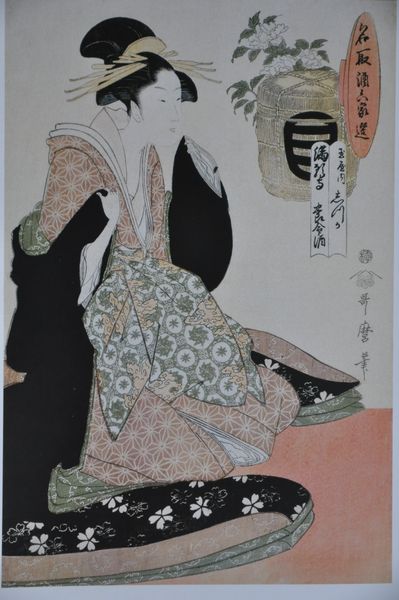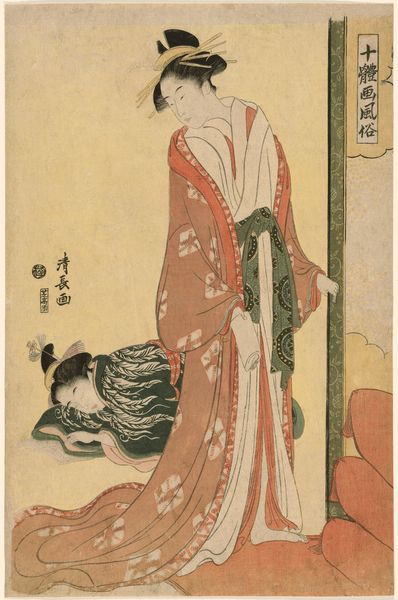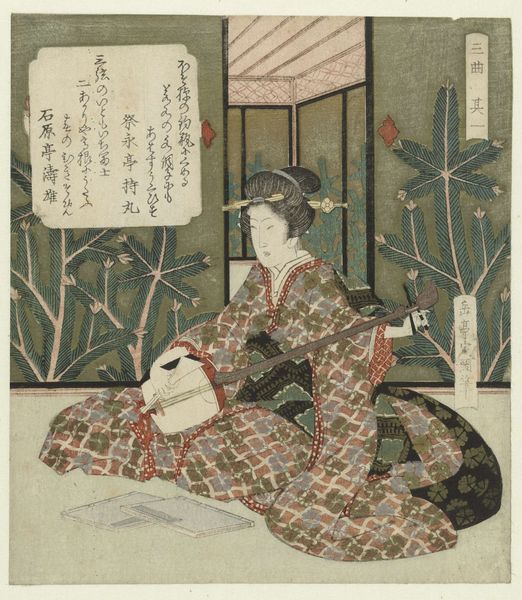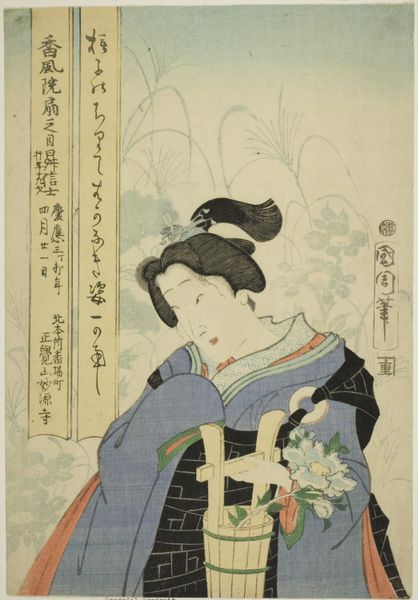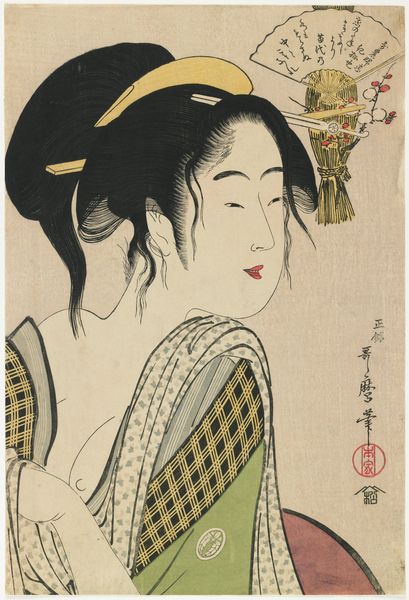
Dimensions: height 353 mm, width 240 mm
Copyright: Rijks Museum: Open Domain
Editor: This is "The Sixth Month," a woodblock print made by Migita Toshihide between 1901 and 1903. It feels quite serene, but also posed, like a photograph almost. What stands out to you about it? Curator: I see a confluence of material practices and social inscription. The woodblock print, as a medium, democratized image production, allowing for the wider circulation of these idealized figures. Note the detail in the textile patterns – each layer necessitates skilled labor. What does this repetition mean, in the context of turn-of-the-century Japan grappling with modernization and the rise of consumer culture? Editor: So, the very act of printing and distributing these images is significant? I hadn’t thought about it like that. Curator: Precisely. Think about the pigments used, likely imported, creating new economic dependencies. Consider how the act of *seeing* this print became accessible. How did mass production influence perceptions of gender and beauty, especially as Japan engaged with global markets? Editor: That makes me think about the role of women in producing these textiles. It highlights the hidden labor that contributes to these beautiful garments, which brings another layer to its materiality. Curator: Yes, excellent point! The female body here is both object and potentially a subject embedded within this matrix of production and consumption. It blurs the boundaries of art, craft, and commodity culture, and emphasizes the labor required to make and circulate an image. Editor: I guess it’s much more than just a pretty portrait! This focus on materials and how things were made has given me so much more to think about. Curator: Indeed. Art objects aren’t just aesthetic achievements; they're sites of economic and social activity, revealing much about their time.
Comments
No comments
Be the first to comment and join the conversation on the ultimate creative platform.
